THE WORLD'S FAVOURITE VIETNAMESE FLAVOUR

It is possible that no other dish represents Vietnam as well as pho: it's deceptive simplicity hides a fascinating complexity of flavours and textures. Pho is the food of the people, from the working class to the elite, and is available for everyone, everywhere - from push-trolleys on the streets to fancy bistros.
The history of pho is not ancient: although there is little written history. It is believed that this delicious noodle soup came in to existance after French colonisation - it is the French who popularised the consumption of red meat. The word pho is also believed to be a variant of the French "feu" (meaning "fire", which has identical pronunciation to pho). Tthe French also have a traditional beef stew called "Pot au Feu", made from slowly cooking cartilaginous pieces of beef for many hours under low heat. The rice noodles and mixed herbs used in the dish are of Chinese influence.
Pho originated in the north, near Hanoi. No two bowls of pho taste the same, due to the specific ratios of herbs, seasoning and cooking styles that each chef uses - but there is still a "standard" (or similar) recipe is found all over in the north. However, as the dish was brought south and taken abroad by immigrant families after the Fall of Saigon, many variations can be found, with different meat cuts, and extra ingredients added. For the northern Vietnamese and "pho purists", this is not a real representation of the dish, and should not be compared to the "true pho" - also known as pho bac.
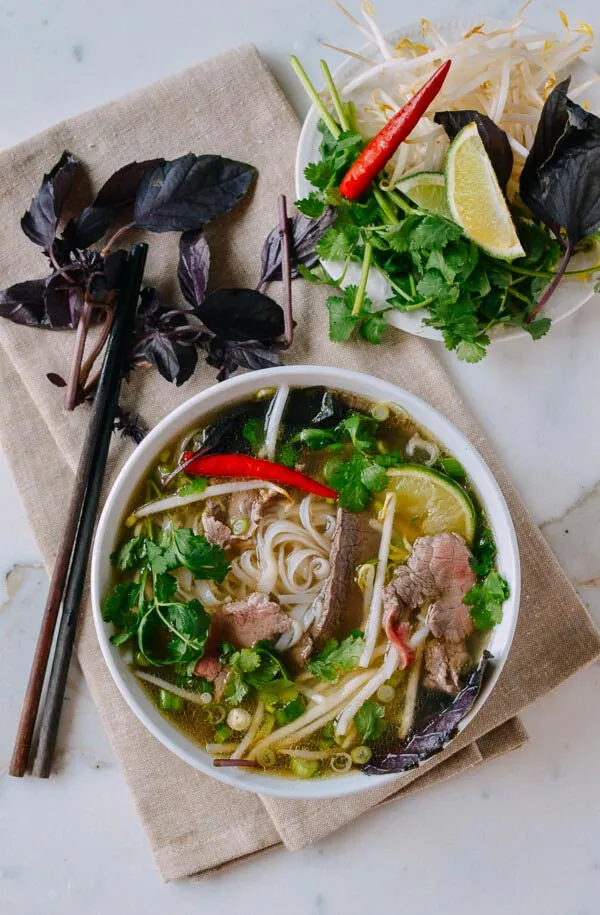
Phở is served as a bowl of white rice noodles in clear beef broth, with thin cuts of beef (steak, fatty flank, lean flank, brisket). Variations featuring tendon, tripe, meatballs, chicken leg, chicken breast, or other chicken organs (heart, liver, tongue,[citation needed] etc.) are also available. 'With the lot' (made with chicken broth and all or most of the shop's chicken and cattle offering, including chicken hearts and livers and beef tripe and tendons) is known as 'Phở đặc biệt' (unique phở). There are also various vegetarian varieties of phở.
Broth
The broth is generally made by simmering beef (and sometimes chicken) bones, oxtails, flank steak, charred onion, and spices, taking several hours to prepare. Seasonings include Saigon cinnamon, star anise, charred ginger, cloves, and sometimes black cardamom pods.
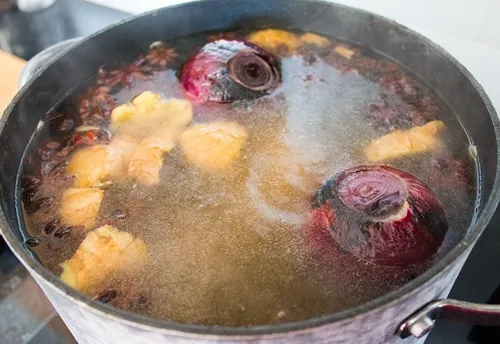
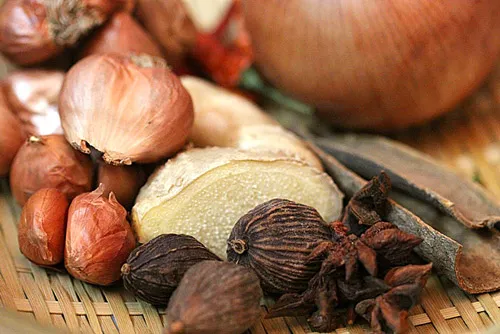
Noodles
The noodles, called bánh phở in Vietnamese, are traditionally cut from wide sheets of fresh rice noodles similar to Chinese Shahe fen, although dried noodles (also called "rice sticks") may also be used. Fresh noodles have a chewy, al dente texture, though they are more expensive and highly perishable. Dried pho is much softer and more affordable.
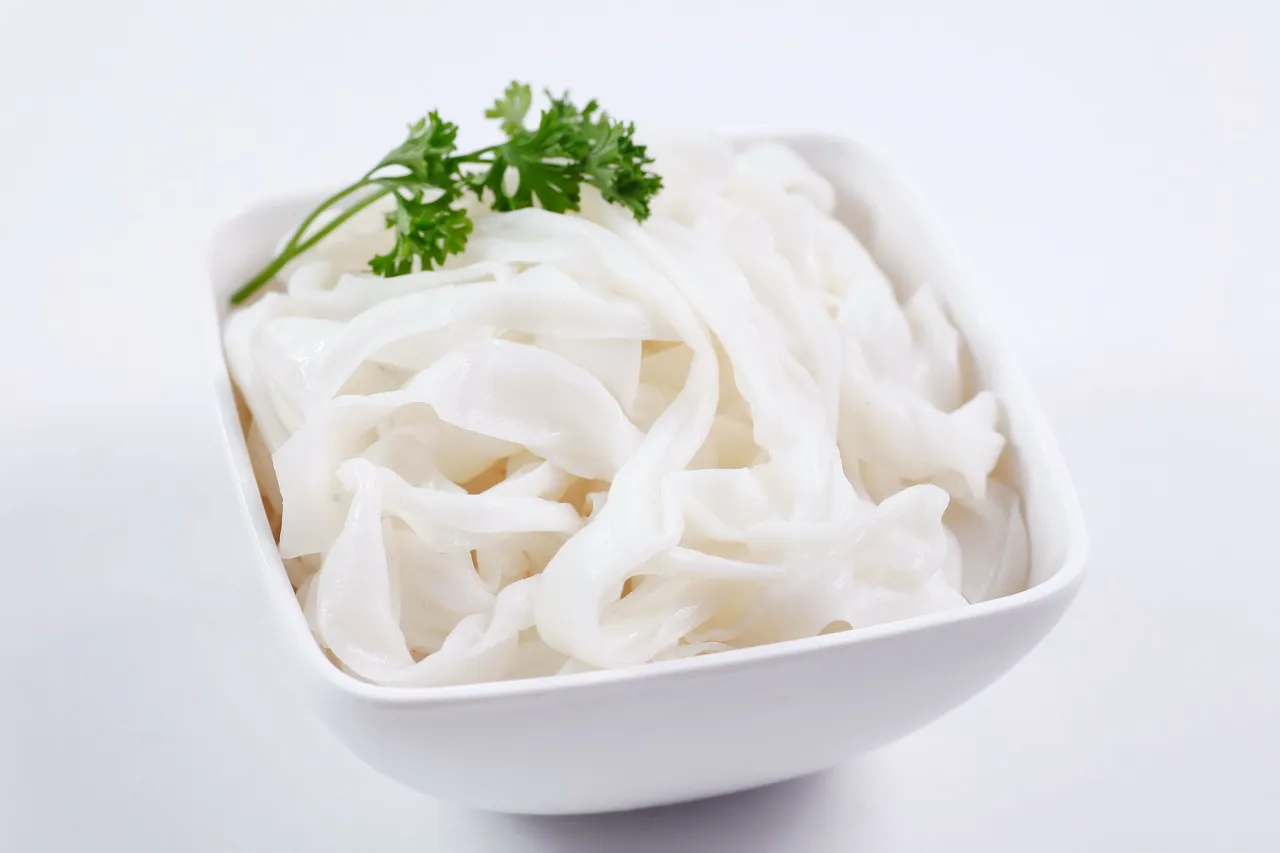
Garnishes
The dish is garnished with ingredients such as green onions, white onions, coriander leaves (cilantro), ngò gai (culantro, or long coriander), Thai basil, fresh Thai chili peppers, lemon or lime wedges, and bean sprouts. These items are usually provided on a separate plate, which allows customers to add to their soup to taste. Some sauces such as hoisin sauce, Chinese black vinegar,[citation needed] fish sauce, and the Thai hot sauce Sriracha, are popular additions as well, along with sugar. The herb ngò ôm (Limnophila aromatica) is sometimes added as well.
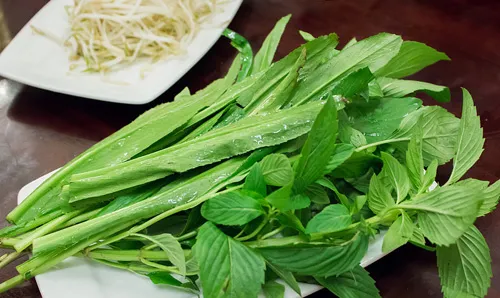
For the phở connoisseur, other garnishes which may be ordered on the side include hành trần (the white "bulb" portion of scallions, blanched in boiling broth) and hành giấm (sliced white onions with a dash of vinegar). These are only brought to the table when specifically requested, as opposed to the general platter of greens and lime wedges. The diner typically squeezes a few drops of lime juice onto the vinegared onion slices before eating them. The hành trần and hành giấm, when eaten with the beef slices, are believed to cut the fattiness and balance the strong beef aroma that some find overpowering.
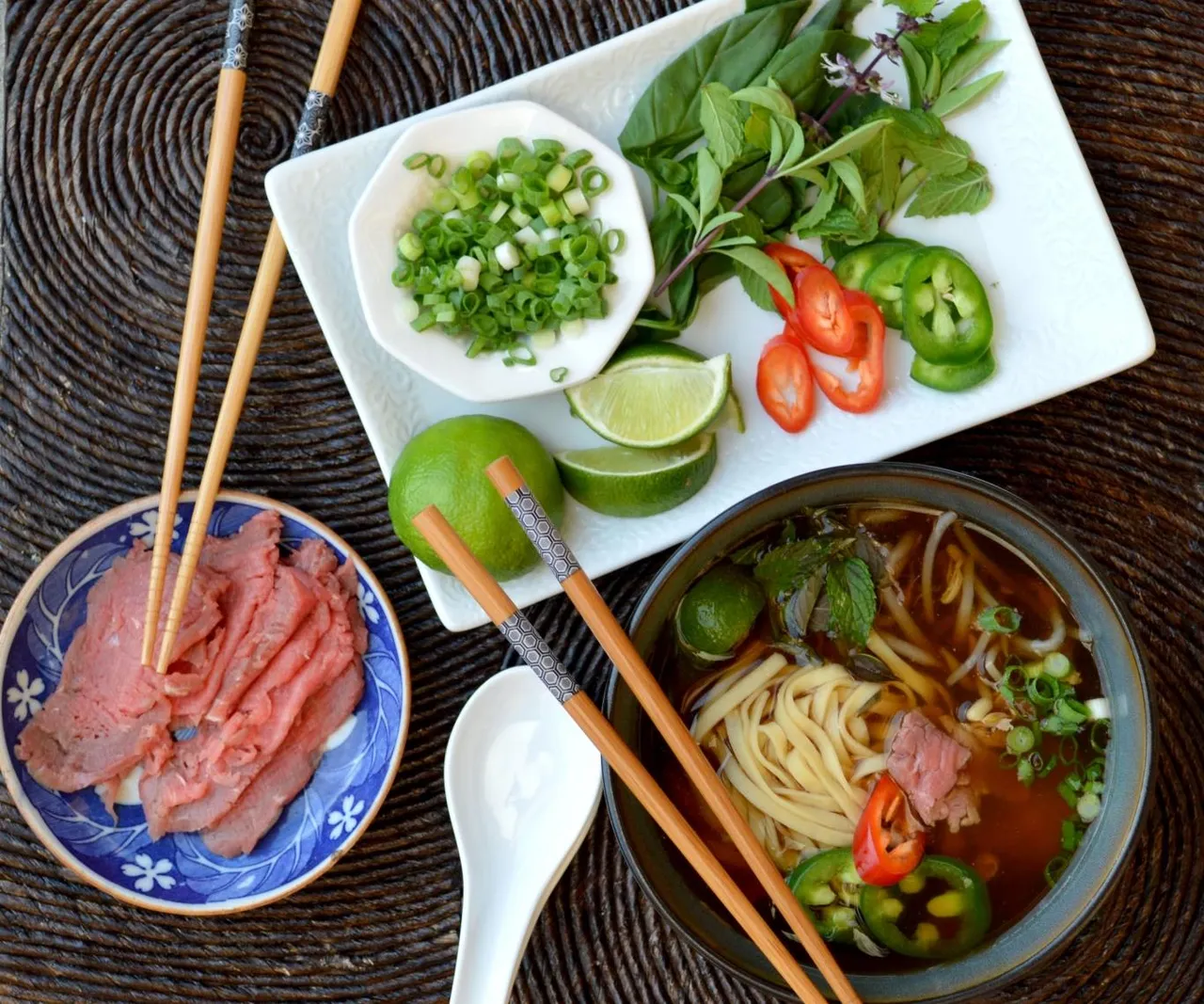
Ingredients
SERVES 4 (change servings and units)
Ingredients
5 lbs beef bones with marrow
5 lbs oxtails
1 lb flank steak
2 large onions, unpeeled, halved, and studded with 8 cloves
3 shallots, unpeeled
2 ounces ginger, unpeeled (1 piece)
8 teaspoons star anise
1 cinnamon stick
4 medium parsnips, cut in 2-inch-chunks
2 teaspoons salt
1 lb beef sirloin
2 scallions, thinly sliced
1 tablespoon cilantro, chopped
2 medium onions, thinly sliced
1/4 cup hot chili sauce
1 lb rice noodles (1/4-inch wide (or banh pho))
1/2 cup nuoc nam (Vietnamese fish-sauce)
black pepper, freshly ground
2 cups fresh bean sprouts
2 fresh chili peppers, sliced
2 limes, cut in wedges
1 bunch fresh mint
1 bunch fresh Asian basil or regular basil
Instructions
- Soak bone overnight in cold water.
- Place bones, oxtails and flank steak in a large stock pot. Add SALTED BOILING water to cover and bring to a boil. Better yet, boil water, add salt then add bones. Marinate oxtails and flank steak with fish sauce, sugar, black pepper.

- Cook 5 minutes, drain and rinse pot and bones.
- Return bones to pot, add 6 quarts COLD WATER and bring to a boil. Skim surface of scum and fat. Stir bones at bottom. After 1 hour of simmering, add oxtails & flank steak.
- The ginger root, shallots, and onion need to be roasted. The ginger root until the outer layer peels off easily. The onion until outer layer is semi-burnt. About 3 min. Roast the anise seeds in a pan for 2 min. Add to broth while waiting to boil.

- Meanwhile, slice beef sirloin against grain into paper-thin slices, about 2-by-2 inches. Slice flank steak the same way; that is after they are cooked for about 1 hour.
- Set aside. In a small bowl, combine scallions, cilantro, and half the sliced onions.
- Place remaining onions in another bowl and mix in hot chili sauce. Soak rice noodles in water. When broth is ready, discard bones.
- Strain broth through a colander lined with a double layer of damp cheesecloth into a clean pot. Add fish sauce and bring to a boil.
- Reduce heat to simmer.
- In another pot, bring 4 quarts of water to a boil, add noodles and drain mediately. Do not overcook noodles.
Do you want to learn more about me? Click here to see a recent @yeo110196 interview with me.